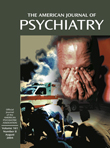This volume has 28 contributors, including four physicians, none of whom is a psychiatrist. The two Ph.D.s named on the cover are not listed as editors. They wrote the first and last chapters together and participated in the writing of several others. Dr. Ma is an associate professor at Temple University and is a distinguished authority on transcultural health issues. Dr. Henderson is a professor at the University of Oklahoma with an international reputation in the fields of substance abuse in minority groups, transcultural health care, and cross-cultural counseling.
The first section is devoted to concepts of addiction, cross-cultural communication, and social ecology. The addiction concepts are familiar ones, and the essence of the chapter on cross-cultural communication is that it is important for care providers to understand the culture of their designated patients. The phrase “social ecology” refers to the many levels at which we must intervene in a logical attempt to abate substance abuse and chemical dependency. We must consider the individual, the interpersonal, the family, organizations in the community, and the community itself. These ideas are not specific to ethnic minorities. The book as a whole is as much about the consequences of poverty relating to drug abuse as it is about the role that minority status plays.
The focus of the book is on describing the experiences that the authors and other workers had while working with and studying substance abuse in different ethnic groups. They include substantial reviews of the relevant literature. The groups that they cover are African Americans, Asian Americans, Hispanic Americans, and Native Americans. The authors repeatedly stress the need to take into account the cultural norms of any culture in which helping professionals intervene.
I believe that this work will be of interest to workers in any of the disciplines involved in treating chemical dependency. Although the concepts are basic to psychiatry, there is considerable information presented here, by and large in the form of data and statistics on the prevalence of the different forms of abuse in the several ethnic populations. For example, one chapter estimates that the incidence of fetal alcohol syndrome in Native Americans is five or six times that in the general population (p. 285). Another chapter reports on treating opium-smoking problems among the Mien people who have immigrated to Oakland, Calif., from Laos. In their mountainous home in Laos, they cultivated the opium poppy and smoked it at all ages for a variety of symptoms. There was no stigma attached to its use in their homeland (p. 156). The chapter titled “Hispanic Heroin Users: Up Close and Personal” reads like an anthropological field study. Its author, an anthropologist, became acquainted with homeless individuals and prostitutes in a large city’s slums in order to write about the faces of heroin addiction in that setting.
There is biographical information on all the contributors. They are a diverse group educationally and geographically. Two of the 15 chapters are devoted to smoking cessation efforts. Virtually every chapter ends with a call for further research.

